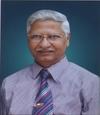
Shivdas G Nanaware
D. Y. Patil University
India
Title: FORMED CELLULAR ELEMENTS OF BLOOD-PLATELETS: EXCELLENT WOUND HEALING CELLULAR TREATMENT
Biography
Biography: Shivdas G Nanaware
Abstract
The wound management forms an important part of the medical and pharmaceutical concern worldwide. Many methods were traditionally used to cure wounds including dressing with natural or synthetic bandages such as cotton, wool, lint and gauzes, and the extracts of plant parts, oils and ghee. The effective wound management depends on understanding a number of different factors such as the type of wound, the healing process , condition of the wound in terms of health and infection ( e.g. diabetic) environment and social setting and the physical and chemical properties of the available dressings. In recent advances it has been proved that the platelets, one of the blood cellular elements, play important role in the wound healing mechanism both in wounds and non-healing diabetic wounds. Platelet cells are practically involved in every event of the wound healing cascade including homeostasis, proliferation, remodeling and cell signaling. Platelet cell growth factors like PGDF, TGF Alfa , TGF Beta and EGF help in chemotaxis, fibroblast proliferation, collagen production and metabolism, epithelial cell proliferation and granulation and tissue formation related functions in wound healing. With the development of platelet cell based procedures at our center such as use of activated platelets, platelet riched plasma (PRP), polymer based scaffolds of Polyvinyl alcohol (PVA) and Polyethylene glycol (PEG) and their combinations have showed dramatic and interesting changes during wound healing. Our efforts in developing the human skin engineering, cellular matrices and cell based therapies are in progress to improve perfect wound healing process. We hope that the potential application of these technologies will be helpful to the people with wounds in general and non-healing diabetic wounds in particular in the near future and will insure rapid and complete healing key strategy for the wound management.
